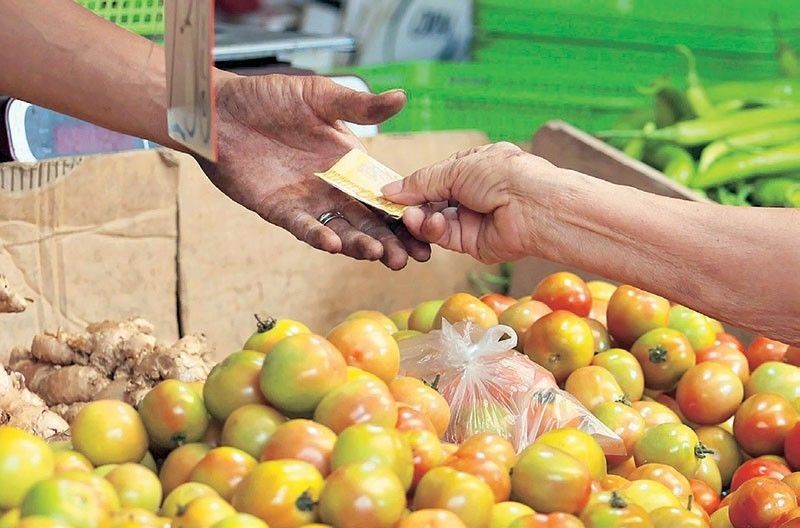Further decline in inflation seen

MANILA, Philippines — Inflation is expected to decline further this year as analysts project a slowdown driven by favorable supply-side factors, allowing the Bangko Sentral ng Pilipinas (BSP) to cut interest rates further.
In a report, Nomura economists Euben Paracuelles and Nabila Amani said the full-year consumer price index (CPI) may slow down to 2.7 percent this year from 3.2 percent in 2024.
“The factors pushing up headline inflation in December are likely to be temporary. Importantly, the output gap remains negative, and we continue to assume that the impact of lower rice import tariffs on food inflation will continue to play out in coming months,” they said.
Based on data from the Philippine Statistics Agency, inflation rose for the third straight month in December to 2.9 percent from 2.5 percent in November, driven by faster upticks in housing and transport costs.
Despite the increase, the 3.2 percent average inflation for 2024 remained within the BSP’s two to four percent target, marking the first time in two years that inflation settled within the target range.
According to Paracuelles and Amani, the BSP is expected to continue with its easing cycle. They project an additional 75 basis points rate cuts, delivered in the first three meetings of the year starting in February. This would bring the policy rate to five percent by mid-2025.
“We still have one more CPI print before the next BSP meeting,” the economists said. “Unless we see another sharp pickup in headline inflation to well above three percent, we see no reason for BSP to pause.”
Aris Dacanay, economist for ASEAN at HSBC, said the BSP could conduct a more gradual easing cycle and might implement rate cuts in alternate policy meetings.
“We updated our policy rate forecast and expect a more gradual easing cycle, wherein the BSP – mindful of Fed moves and forex volatility – will cut in alternate rate setting meetings until the policy rate reaches five percent by third quarter of 2025. That is three 25bp rate cuts,” Dacanay said.
The uptick in December inflation will also not derail the policy rate outlook for this year as inflationary pressures seem to be “short-lived.”
“For 2025, inflation could average 2.5 percent, driven by lower rice prices, deflationary pressures from Chinese goods, and subdued global energy demand,” Dacanay said.
He also said at the anticipated rate cuts would likely have a more pronounced impact on growth toward the end of 2025 and into 2026 as household consumption and capital investments gain momentum.
Dacanay said that there would be a lag effect in monetary easing on economic growth, noting that many potential homebuyers and investors may delay major financial decisions until borrowing costs stabilize at lower levels.
While the inflation outlook remains favorable, Citi’s economist for the Philippines Nalin Chutchotitham said risks are tied to electricity rate adjustments. Citi revised its 2025 inflation forecast to 3.1 percent, up from 2.8 percent due to anticipated hikes in power costs during the first half of the year.
Nonetheless, lower oil prices and potential deflationary pressures from real estate could offset some of these increases.
“We expect the BSP to continue to cut policy rates by 25 basis points at the Feb meeting to 5.50 percent,” she said, adding that there would be additional rate cuts in June and August.
“We expect 50-basis-point more likely to follow in 2026 if inflation stays close to the target mid-point, thus bringing real policy rate closer to historical level and continue to support economic growth,” she added.
The Monetary Board decided to adjust the frequency of its policy meetings to six per year, starting in 2025, from seven meetings per year previously. It will have its first policy review this year on Feb. 20.
- Latest
- Trending




























